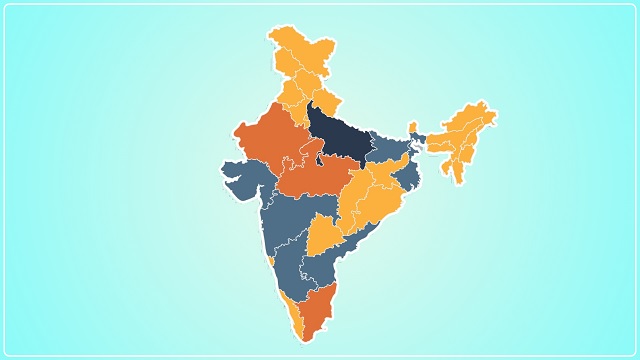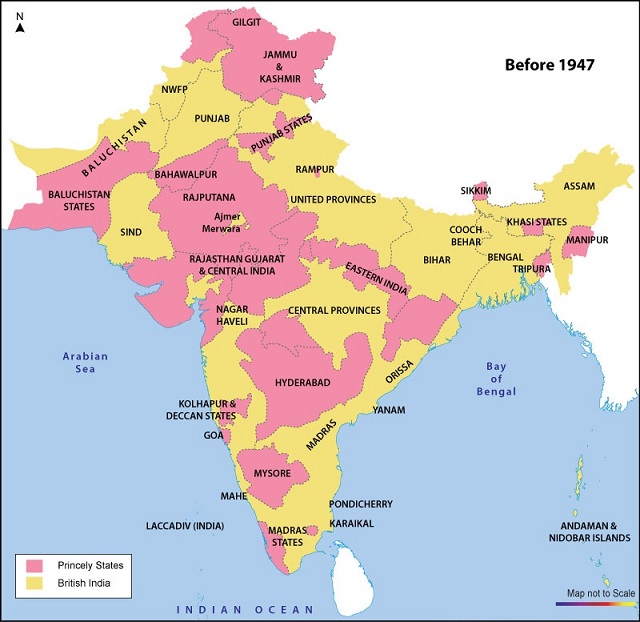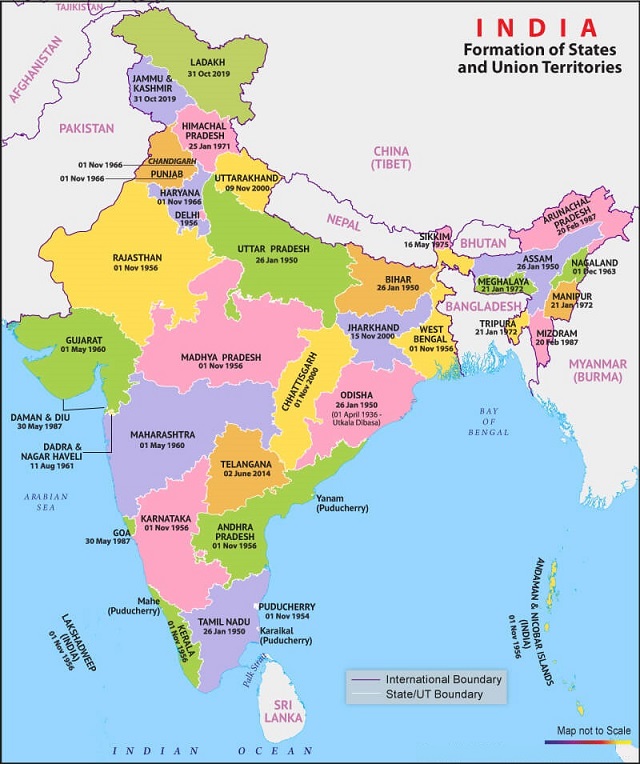
As we all know, before 1947 India was divided into numerous provinces and princely states. After getting independence from British Government in 1947, India integrated itself into a single country and later on, reorganized itself into states and union territories. But have you ever thought about how India did this?
In this article, we are going to discuss in chronological order the events, which took place in and after 1947 and see how changes came in the structure of states of India. The contents of this article will include
- Before Independece
- Challenges after independce
- Four-Fold classification
- 1956, Reorganization of states
- Latest Formation of India’s states
Before Independence
As we all know our country, India got independence from the British on the 15th of August 1947, but a few months before independence, when the British Government announced that they were going to make India independent, certain Muslim groups and the All-India Muslim League and their leader Muhammad Ali Jinnah, because of his political aspirations, made his demand that they want a separate country for the Muslim population. And on the other hand, all other leaders of India wanted to have a secular country. Then it was decided in between the Muslim League and the British Government that the areas having the majority of the population as Muslims will be united to make Pakistan. however, all the other leaders were of the opinion that India should remain a secular country.
On this conflict, a plan came from British Government on 3 June 1947, The Mountbatten Plan, in which the theory of the partition of British India was accepted, that it will be divided into two dominions, India and Pakistan, which will be separated by a boundary which will be decided by boundary commissions headed by Sir Cyril Radcliffe.
It was not so easy to divide India and Pakistan, area-wise because British India had two types of areas: provinces and princely states.

British Government had direct control over the provinces(the British India part on map), so provinces could be handed over to India and Pakistan directly by the government area-wise. But in the case of princely states, the government used to rule through agreement with their kings.
It was stated in the Mountbatten Plan that the British Government would divide all the provinces directly into India and Pakistan according to the area. But all the princely states were given the right to join either India or Pakistan, based on two major factors: Geographical contiguity and the people’s wishes. if they didn’t want to accede to either of them, then they had the choice to remain independent.
Challenges after Indipendence
To implement this Mountbatten Plan, the British Parliament passed the Indian Independence Act of 1947, under which Pakistan got its independence on 15 August 1947 and India on 15th of August 1947. And 2 days later, on the 17th of August 1947, the boundary separating India from East and West Pakistan was released, called the Radcliffe Line.
There used to be a total of 17 provinces and 565 princely states in British India, these 17 provinces were divided directly into India and Pakistan, area-wise but the problem came mainly in the princely states. According to the geographical contiguity, 552 princely states out of 565 were situated within the geographical boundaries of India.
India had this challenge, to persuade all these princely states to join India because these princely states had a lot of land area. The problem was that the Mountbatten plan had also given them the option to remain independent, and some kings wanted to make their own independent country due to their political aspirations. Some political analysts also believe that this was the strategy of the British government behind giving such options to the princely states, that India be divided into small parts and never become stable to challenge the British on an international platform, in the future. But all these possible conspiracies were defeated by the first deputy prime minister and home minister of independent India. Sardar Vallabhbhai Patel was given the responsibility of integrating these in India. Sardar Vallabhbhai Patel was a very capable barrister and possessed a splendid personality. His way of talking was such that he could impress anyone with his words. A huge role in this task of integration was played by the secretary of his ministry, V.P. Menon, who was a senior civil servant. They worked together and by hook or by crook finally, they integrated all the princely states with India. Although they encountered difficulties in dealing with some princely states, they eventually managed with the diplomacy of the then prime minister Jawaharlal Nehru. After the integration of India, the task in front of Indian Leaders was to organize India in various states. There has been a demand from many people, especially from south Indian regions, for the reorganization of states on linguistic basis.
Accordingly, in June 1948, The Government of India appointed the Linguistic Commission under the chairmanship of S K Dhar to analyze the feasibility of this. The commission submitted its report in December 1948 and recommended the reorganization of states on the basis of administrative convenience rather than the linguistic factor. This created much resentment and led to the appointment of another commission immediately in December 1948, The JVP Committee to review the whole matter afresh. It consisted of 3 members Jawaharlal Nehru, Vallabhbhai Patel, and Pattabhi Sitaramayya. This committee submitted its report in April 1949 and formally rejected language as the basis for the reorganization of states in India.
Four-Fold classification
On the basis of the recommendation of these committees, the Indian Government came up with the Four-Fold classification of the states of the Indian Union. Part-A, Part-B, Part-C, and Part-D states.
- Part-A consisted nine erstwhile governor’s provinces of British India.
- Part-B consisted nine erstwhile princely states with legislatures.
- Part-C comprised of erstwhile chief commissioner’s province of British India and some of the erstwhile princely states.(total 10)
- Part-D consisted the Andaman and Nicobar Islands only.

After this organization, the people who wanted the status on Linguistic basis started agitations, especially in madras by the Telugu-speaking people. A prolonged popular agitation and the death of Potti Sriramulu, after a 56-day hunger strike for the cause, forced the Indian government to create the first linguistic state, known as Andra Pradesh, by separating the Telugu speaking areas from the Madras state.
This intensified the demand from other regions for the creation of states on linguistic basis.
Led by this, the Indian government appointed a 3 member committee once again in December 1953 named the State Reorganization commission under the chairmanship of Fazl Ali to re-examine the whole question of linguistic basis. The committee submitted its report in September 1955 and broadly accepted language as the basis of the reorganization of states. But, rejected the theory of ‘ one language – one state’. Unity of India should be regarded as the primary consideration in any redrawing of the country’s political units, in their view. The commission suggested the abolition of the Four-Fold classification and the creation of 16 states and 3 centrally administered territories.
1956, Reorganization of states
The Government of India accepted the recommendation of the Fazl Ali Commission with certain minor modifications and came up with the 7th constitutional amendment act 1956 and abolished Four-Fold classification and re-drawn India’s map with 14 states and 6 union territories.

Latest Formation of India’s states
Even after the large-scale reorganization of the states in 1956, the political map of India underwent continuous changes due to the pressure of popular agitation and political conditions. The demand for the creation of some more states on the basis of language or cultural homogeneity resulted in the bifurcation of existing states.
Talking of a recent event, Jammu & Kashmir which was earlier a state was divided into two Union territories: Jammu & Kashmir and Ladakh by the Indian Government by removing Articles 370 and 35A from the constitution.
In 2022, India has 28 states and 8 union territories

You may refer to this video if you want the explanation in Hindi






